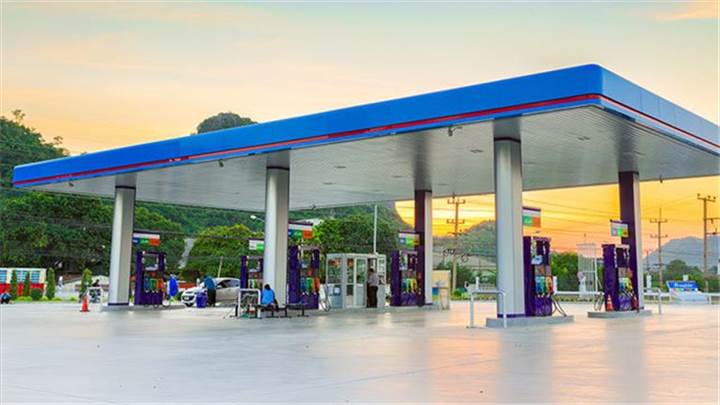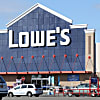- N E W S | Special365.com
- Ziploc Bag Method Unveiled: First, Add Ice and Salt – KIDS Adore It for ICE CREAM AFTER!

"I Love 18 Lbs Of Healthy Ice Cream Using Ziploc..." What Is 18 Lbs ZIPLOC Bag Method? KIDS Adore It for 18 Lbs ICE CREAM After!

(News-Special365) - If you love to get 18 lbs of ICE CREAM; healthy home made to boost your mood, first, understand why 18 lbs Ice Cream gets made, instead of 17lbs of ice cream or 19lbs of ice cream. Far from being a magical quick fix, the Ziploc Bag Method is a long-term strategy aimed at fostering weight balance through mental and emotional well-being. By cultivating an optimistic mindset, this innovative approach serves as a catalyst for breaking free from lethargy, thereby enhancing cognitive function and encouraging regular physical activity. Contrary to popular belief, the primary benefit of the 18 Lbs Ice Cream Ziploc Bag Method is not direct weight loss; althrough it helps, rather, it opens up psychological pathways that counteract laziness, which in turn naturally facilitates weight management. In the following sections, we will delve into the scientific underpinnings of this method, demonstrating how its proper implementation can lead to sustained optimism—a mental state that is, in fact, the cornerstone of the Ziploc Bag Method's efficacy with treatment of 18 Lbs Ice Cream in Ziploc Bag , Home Made.
Capturing the zeitgeist of contemporary wellness trends, the Ziploc Bag Method has ascended to the pinnacle of video charts, captivating a broad demographic. This burgeoning popularity is not merely a testament to the method's novelty but also to its multifaceted benefits. Not only does it purport to facilitate the detoxification of deleterious substances from the body, but it also culminates in the creation of homemade ice cream—a gastronomic delight that serves as the pièce de résistance of the entire process. Skeptics and inquisitive minds alike may ponder the scientific plausibility of employing a simple Ziploc bag, ice, and salt as instruments of health optimization while simultaneously offering the allure of a frozen treat. To address these queries, it is imperative to delineate the foundational principles that undergird this method.

Let it be unequivocally stated: this is not some ephemeral panacea or a facile shortcut to well-being. Far from it. The method necessitates a considerable investment of time, concerted effort, and, ideally, collaborative participation from family members. The overarching objective transcends mere physical health; it aims to cultivate psychological and emotional well-being through recurrent engagement in this activity. The communal aspect of participating with friends or family, including younger members, serves to amplify the holistic health benefits, thereby making it a comprehensive wellness regimen.
To embark on this intriguing journey, one can readily access a plethora of instructional materials available on the internet by searching for "How to Make Ice Cream with Ziploc Bag and Ice." This methodological approach was ingeniously conceived by an unidentified innovator who recognized the potential for transforming a conventional household item into a tool for health betterment. By repurposing the Ziploc bag initially used for crafting ice cream, one can ostensibly contribute to enhancing both physiological and psychological health, thereby elevating this method from a mere culinary experiment to a holistic lifestyle choice.
The Intricacies of Thermodynamic Interactions in the Ziploc Bag Method: The Ziploc bag method for crafting 18 lbs ice cream is predicated on the thermodynamic properties of aqueous solutions, specifically the phenomenon of freezing point depression. When sodium chloride, commonly known as table salt, is introduced into the crystalline structure of ice, it disrupts the hydrogen bonding among water molecules, thereby lowering the phase transition temperature of the system. This is a classic example of colligative properties, which are properties of solutions that depend on the ratio of the number of solute particles to the number of solvent molecules in a solution, and not on the nature of the chemical species present.
The Ziploc bag serves as an isolated thermodynamic system where endothermic reactions transpire. The salt absorbs latent heat from the surrounding milieu, including the ice, thereby inducing a phase transition from solid to liquid at a temperature lower than the normal freezing point of water. This supercooled liquid becomes an ideal medium for the nucleation and growth of ice crystals, which are essential for the formation of ice cream.
A Comprehensive Guide: How It Works
1.Extensive Research: Before embarking on this culinary adventure, it's imperative to conduct thorough research. Numerous pedagogical videos are available online that elucidate the nuances of the Ziploc bag method for making ice cream. These tutorials often delve into the scientific rationale behind the method, providing a comprehensive understanding of the process.
2. Preparation and Reusability: After successfully crafting your total 18 Lbs of ice cream, the Ziploc bag need not be relegated to the waste bin. Consider repurposing it by filling it with aromatic herbs like lavender, mint, or even slices of citrus fruits. These natural elements can serve as olfactory stimulants, which have been studied for their potential therapeutic benefits when you re-use for another 18 lbs of healthy ice cream.
3. Refrigeration and Infusion: Place the 18 Lbs of Ice Cream in Ziploc bag in a refrigerated environment for a minimum of 48 hours. This duration allows for the volatile compounds in the herbs or fruits to permeate the bag, creating an aromatic reservoir.
4. Olfactory Breathing Exercise: Upon retrieval from the refrigerator, puncture small holes in the Ziploc bag. Engage in a structured breathing exercise, inhaling deeply through the nose to absorb the aromatic compounds. Perform this exercise twice a week to maximize potential benefits.
5. Periodic Replacement and Culinary Enjoyment: Every 2-3 months, it's advisable to prepare a new aromatic Ziploc bag. This periodic replacement not only refreshes the aromatic reservoir but also provides an opportunity to indulge in the joy of making ice cream anew. The homemade ice cream serves as a healthier alternative to store-bought versions, which often contain preservatives and excessive sugar.
The Underlying Mechanism: A Deep Dive into Neuropsychology
While the primary objective of this activity is recreational and social, the aromatic herbs encapsulated in the Ziploc bag may offer olfactory stimulation. Olfactory receptors, which are protein molecules located in the nasal epithelium, transmit signals to the olfactory bulb and subsequently to other regions of the brain, including the limbic system. The limbic system is implicated in the regulation of emotions and mood, and olfactory stimulation has been posited to influence these neural pathways.

CLICK HERE TO BUY ZIPLOC BAGS

Limitations and the Importance of Cognitive Disposition
The efficacy of this method is contingent upon an individual's cognitive disposition and psychological makeup. A proactive and positive mindset can act as a catalyst in optimizing the perceived benefits of this activity. Cognitive behavioral theories suggest that positive reinforcement and engagement in rewarding activities can engender a virtuous cycle of behavioral modification, which can indirectly influence lifestyle choices, including physical activity and time management.
The Nutritional Aspect of Homemade Ice Cream The advantage of homemade ice cream lies in its customizable nutritional profile. Unlike commercial ice creams laden with artificial sweeteners and preservatives, homemade versions can be tailored to include natural sweeteners and nutrient-rich ingredients, thereby aligning with dietary guidelines and preferences.
Stay Informed: Subscribe for Updates In the ever-evolving landscape of wellness and lifestyle optimization, new methodologies and approaches are continually being discovered and validated. To stay abreast of these developments, consider subscribing to our newsletter. Upon signing up, you'll receive periodic emails containing curated content that aligns with your interests and wellness goals.

CLICK HERE TO BUY ZIPLOC BAGS

NEXT HOT NEWS EVENT: Ebay, and also Sears, Amazon relations
Amazon is related, SEARS, and Jcpenney all agreed with that while it was closing the locations, it plans to speed up the expansion of "convenience-led formats" such as curbside pickup, drive-thru and mobile-only pickup locations.
The Petrol Retailers Association told Auto Express that many small, independently owned stations—primarily in rural England, Ireland, and Scotland—have already seen gasoline sales plunge 75 percent, and diesel, a similarly worrying 71 percent. A lack of cashflow has already forced some of these stations to close their doors, a few of them for the ugly "short term" as the world tries to flatten the infection curve, though others may be unable to return to normal operations as the world gets back on its feet. Operators of gas stations in the United States, however, needn't be worried about a storm as severe hitting their businesses.
Dunkin' reached an agreement to exit the Speedway-owned-and-operated locations along the East Coast this year, King said.
"By exiting these sites, we are confident we will be better positioned to serve these trade areas with Dunkin’s newest Next Generation restaurant design that offers a broader menu and modern experience," she said.
In a world where fewer people smoke, commuters get pickier about their snacks, cars need less gas, and apps like GasBuddy make competition especially fierce, gas stations were already facing a scary, uncertain future. Now, with the COVID-19 pandemic keeping many people and cars at home and the looming threat of mass bankruptcy forcing consumer demand even lower, we have to ask: are gas stations making any money?
The lack of profits may force a number of gas stations and convenience stores to close down — especially in rural areas or markets that are especially dependent on commuters. And, like it or not, that presents a big problem for everyone. “To help freight move and help key workers travel safely and independently through this period of crisis, petrol filling stations must remain open, but this is proving to be a challenge for many filling stations,” explains Brian Madderson, chairman of the Petrol Retailers Association (PRA) in the UK. The problem is only being exacerbated by fact that the price of crude oil is hitting an 18-year low of about $20/bbl as I type this. That’s because the gas that many of the smaller, independently-owned gas stations have “in stock” right now was bought weeks ago, when prices were still high.
That's left the local gas station to focus on more take-home meals, or stock up on cleaning supplies. Typically, the average convenience store focuses on "immediate consumption items," things people consume within an hour of purchase. Think gum, chips and pop. As the pandemic sweeps across the US, gas stations and their convenience stores are trying to maximize the one-stop-shop appeal as consumers limit trips.
In the US, the situation is similarly dire. “More than 60% of convenience stores are independently owned,” writes MSNBC’s Robert Ferris. He also notes that these stores are often competing with massive conglomerates that own “more than 200 stores.” As such, these smaller stores have had to make tough choices.
“Fuel retailers are having to maintain pump prices at previous levels to avoid suffering significant stock losses,” offers Madderson, in an effort to explain why prices at the gas stations’ pumps haven’t plummeted along with the price of crude. “When the COVID-19 restrictions are lifted and high sales volumes return, then we expect to see reductions in retail fuel prices.”
The impact that mass closures of gas stations would have on the economy at large won’t be limited to trucking routes and cost of goods, either. Loss of those businesses will impact road and city taxes collection, as well, and may tip some smaller towns into default, causing even more chaos.
It will be worth keeping an eye on the UK — being a few weeks “ahead of the US,” as they are — to help us prepare mentally for what’s coming. Until then, keep your PHEVs and BEVs plugged in, and hope for the best? What do you guys think? Is this a problem that’s been a long time coming, or are American gas stations going to ride this out just fine? Let us know what you think in the comments.
The sale of Speedway, one of the country’s largest convenience store chains with nearly 4,000 outlets, is the biggest corporate deal in the oil sector since the coronavirus slashed demand for fuel early this year.
Marathon Petroleum, based in Ohio, has been struggling financially and has shuttered operations in two refineries. It had been seeking to spin off Speedway for months. Negotiations between Marathon and Seven & I had stumbled earlier this year over price.
Marathon praised the deal in its announcement as a step forward in its efforts to shore up its finances and stave off pressure from activist investors seeking to dismantle the company.
Marathon said it expected the deal to bring in $16.5 billion in after-tax cash proceeds, much of which would go to paying down debts and to support dividend payments. Included in the deal is a 15-year agreement in which Marathon would provide 7.7 billion gallons of petroleum a year to the gasoline station chain. Marathon said it expected the deal to close in early 2021 after review by antitrust officials.
Last year, Marathon agreed to spin off its Speedway chain under pressure from investors that included the hedge fund Elliott Management Corporation. The Canada-based convenience store operator Alimentation Couche-Tard had also expressed interest in buying the stores.
The spinoff underlines the current turmoil in oil refining. Struggling with lower sales, Marathon announced last week that it would not restart two refineries in New Mexico and California that it had idled in April.
Its refinery in Martinez, Calif., was under particular pressure because of California’s tight environmental specifications, and it will be converted into a terminal facility for storage and loading. The Gallup plant in New Mexico was hurt by a small local market and high costs.
Both gasoline and diesel sales have recovered some in recent weeks, but jet fuel sales are severely depressed and there is no sign of a recovery for at least another year, analysts say.
The national average price for a gallon of gasoline dropped below $2 this week. States continue to ramp up stay-at-home orders to ensure social distancing. The coronavirus outbreak has shifted typical American life and touched nearly every portion of our everyday activities.
If a driver does stop for gas, convenience stores may now advertise bulk items or emphasize cleaning materials and toiletries. It's simply a matter of staying relevant. Without drivers motoring to work, driving to the mall or hitting the town to catch a movie at the theater, there's not much of a reason to grab that spur-of-the-moment candy bar or bag of sunflower seeds.
Not excluded is the gas station, a fixture common on so many intersections and corners across the US. They rely largely on customers coming to fulfill one main need: put fuel in the tank. What's going on with the gas station/convenience store combo in the era of COVID-19?
Roadshow reached out to the National Association of Convenience Stores and learned that sales are down -- both at the pump and inside the associated convenience stores. These businesses are working to meet a different kind of demand for those stopping in, however.
That's left the local gas station to focus on more take-home meals, or stock up on cleaning supplies. Typically, the average convenience store focuses on "immediate consumption items," things people consume within an hour of purchase. Think gum, chips and pop. As the pandemic sweeps across the US, gas stations and their convenience stores are trying to maximize the one-stop-shop appeal as consumers limit trips.
"Convenience stores have always sold time to consumers. What's changed, at least for the short term, is how consumers are defining time," Jeff Lenard, vice president of NACS' strategic industry initiatives, tells Roadshow. "Convenience stores are quickly pivoting to offer different items to stay as relevant as possible during this pandemic."
"Convenience stores have always sold time to consumers. What's changed, at least for the short term, is how consumers are defining time," Jeff Lenard, vice president of NACS' strategic industry initiatives, tells Roadshow. "Convenience stores are quickly pivoting to offer different items to stay as relevant as possible during this pandemic."
If a driver does stop for gas, convenience stores may now advertise bulk items or emphasize cleaning materials and toiletries. It's simply a matter of staying relevant. Without drivers motoring to work, driving to the mall or hitting the town to catch a movie at the theater, there's not much of a reason to grab that spur-of-the-moment candy bar or bag of sunflower seeds.
"We're already seeing an upswing in 12- and 18-pack beers, not necessarily because people are consuming more beer, but more because they want to maximize what they purchase every time they go out to a store," Lenard says.
When customers do pop in, the store might look different than they last remember. A majority of retailers have now closed any sit-down dining areas and almost half of convenience stores have limited access to self-serve parts of the store, such as fountain drinks and the place where hot dogs spin seemingly endlessly.
Will we see gas stations close entirely? The UK's Petrol Retailers Association warned it's a possibility across the pond, but here in the US, Lenard hasn't seen anything as drastic.
The national average price for a gallon of gasoline dropped below $2 this week. States continue to ramp up stay-at-home orders to ensure social distancing. The coronavirus outbreak has shifted typical American life and touched nearly every portion of our everyday activities.
Purchasing an off-road SUV like the Jeep Wrangler means you're ready for the great outdoors, roof off and doors stored elsewhere for a unique experience. The trouble is, taking the doors off of a Wrangler means you lose the side mirrors and that's been a pesky problem for owners. The Ford Bronco, meanwhile, doesn't have this issue with the mirrors mounted to the A-pillars.
Not anymore, if you're willing to drop a few hundred bucks on an official Mopar accessory. When the doors come off, Mopar's doors-off mirror kit gives the driver two side mirrors that quickly install. It'd be best to just have the mirrors always attached but at least this is a factory-backed solution. Each mirror specifically attaches to a cowl-end cap bolt and the upper door hinge. Mopar also finishes the units in an anticorrosion coating, and each mirror has breakaway points for when you need to make it through a tight pass off-road.
Roadshow reached out to the National Association of Convenience Stores and learned that sales are down -- both at the pump and inside the associated convenience stores. These businesses are working to meet a different kind of demand for those stopping in, however.
And although it's one more thing to do before hitting the trail, installation is pretty easy. Every Wrangler and Gladiator comes with a T40 bit wrench -- the exact and only tool required to fasten the mirrors to the door hinge.
The fact these mirrors are here now is just coincidence. Ford is busy boasting about some big preorder numbers for the Bronco and the SUV officially lands next spring. It will definitely be a rivalry to watch.
Dunkin', the coffee and doughnut chain formerly known as Dunkin' Donuts, said Thursday that it is planning to close up to 800 locations across the U.S. by the end of this year.
Earlier this month, the chain confirmed to TODAY Food that it would be closing 450 stores located inside Speedway gas stations. On Thursday, a representative for Dunkin' told TODAY that the company has since identified an additional 350 locations that it is planning to close.
Last year, Marathon agreed to spin off its Speedway chain under pressure from investors that included the hedge fund Elliott Management Corporation. The Canada-based convenience store operator Alimentation Couche-Tard had also expressed interest in buying the stores.
"We are assessing our real estate portfolio and working with our franchisees to permanently close off-strategy, low-volume sales locations," a rep for Dunkin' said in a statement provided to TODAY Food.
Not excluded is the gas station, a fixture common on so many intersections and corners across the US. They rely largely on customers coming to fulfill one main need: put fuel in the tank. What's going on with the gas station/convenience store combo in the era of COVID-19?

The company said the closures are being made to set the "U.S. system up for continued strong, profitable future growth," but, like many restaurant chains, Dunkin' has been hit hard by coronavirus. Sales in U.S. shops open for at least a year declined 18.7% over a three-month period ending on June 27 due to decreased food traffic during the pandemic.
"Most of these locations are also unprofitable for the franchisees and are well below average for both sales and profitability," said the rep. "More importantly, for many of these franchisees, closing these restaurants will enable them to invest in remodels, new restaurants, and potentially relocate some to higher-traffic areas, or to areas where they can add a drive-thru. We expect most of these closings will take place this year and will position us and our franchisees for more profitable future growth.”
As of July 25, 96% of Dunkin' locations in the U.S. had reopened. Locations that remain closed are mainly located within transportation hubs, on college campuses and in sports venues, according to the company.
In response to the pandemic, several Dunkin' locations began offering DIY doughnut decorating kits for kids. The chain also recently partnered with Post to create two coffee-flavored cereals that each contain a little bit of caffeine. EDITOR'S NOTE: (July 31, 2020, 3:30 p.m. EST): An earlier version of this story stated that Dunkin' would be closing 800 locations by the end of 2020. The coffee chain says it expects to close up 800 underperforming locations this year.
Marathon praised the deal in its announcement as a step forward in its efforts to shore up its finances and stave off pressure from activist investors seeking to dismantle the company.
Marathon said it expected the deal to bring in $16.5 billion in after-tax cash proceeds, much of which would go to paying down debts and to support dividend payments. Included in the deal is a 15-year agreement in which Marathon would provide 7.7 billion gallons of petroleum a year to the gasoline station chain. Marathon said it expected the deal to close in early 2021 after review by antitrust officials.
The spinoff underlines the current turmoil in oil refining. Struggling with lower sales, Marathon announced last week that it would not restart two refineries in New Mexico and California that it had idled in April.

Its refinery in Martinez, Calif., was under particular pressure because of California’s tight environmental specifications, and it will be converted into a terminal facility for storage and loading. The Gallup plant in New Mexico was hurt by a small local market and high costs.
Both gasoline and diesel sales have recovered some in recent weeks, but jet fuel sales are severely depressed and there is no sign of a recovery for at least another year, analysts say.
The $750 first came into play after The New York Times' blockbuster story on Sept. 28 noted that Trump paid "$750 in federal income taxes the year he won the presidency. In his first year in the White House, he paid another $750." It does seem strange that Trump would pay the exact same amount for two years in a row. Again, how often has that happened with your taxes? Maybe then, this idea of a fee could sound credible, but it's really not.
She refers to Form 3800 for 2016 or 2017, the rules before the Tax Cuts and Jobs Act went into effect on 2018 returns, and the instructions relating to limitations to the allowable general business credit carryforward. "Without digging in, and without actually seeing his filed Form 3800, nothing obvious jumps out. But my hunch is that he’s tripping a limitation to the amount of the general business credit carryforward he’s allowed to take against AMT, leaving just $750 in taxes owed," De Simone said.
Hines, who is the research director of the Office of Tax Policy Research in the U-M's Stephen M. Ross School of Business, said there are "what the IRS calls 'user fees' to which 'filing fee' could conceivably refer." "User fees are charges that the IRS imposes for certain services to taxpayers, such as resolving certain tax questions before the taxpayer's return is filed. This costs the IRS resources, so they charge the taxpayer," Hines said. He noted that the user fee is "not exactly a filing fee, but it's understandable that someone might call it a filing fee."
Even so, he said, $750 would be "a very small user fee, so if that's what it is, it's for something quite minor." Hines said it seems that the New York Times is claiming that Trump's tax return showed that $750 was owed in income on those two returns. "And if so, a user fee should not appear on that line," he said. "The short answer to your question is no. There is no filing fee for a personal tax return," Hines said.










